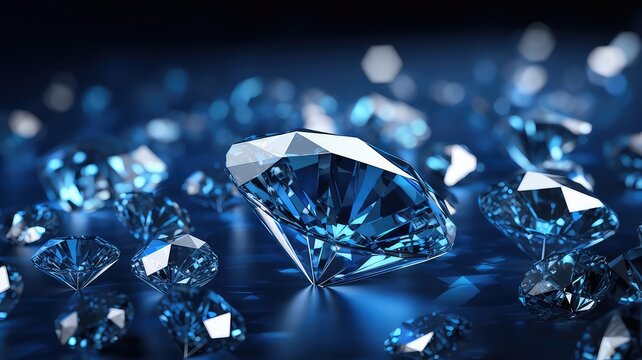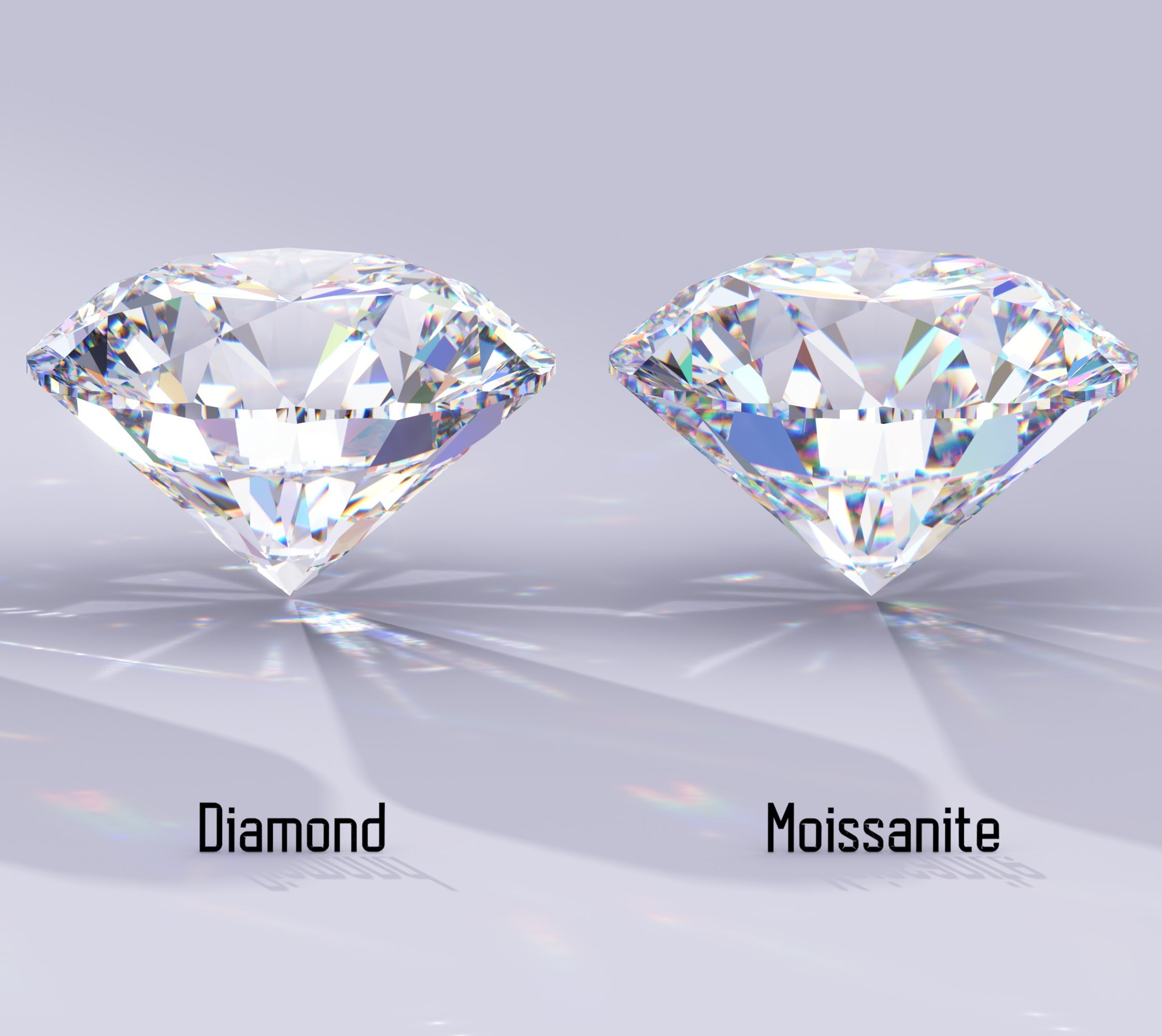
When purchasing a diamond—whether natural or lab-grown—the 4Cs are crucial factors that determine the stone’s quality, beauty, and value. These 4Cs—Cut, Color, Clarity, and Carat Weight—are universally recognized standards in the diamond industry and apply equally to both 4Cs lab grown diamonds and mined diamonds.
In this article, we will explore the 4Cs of lab-grown diamonds, providing you with the knowledge needed to make an informed decision when selecting a man-made diamond that meets your preferences and budget.
What Are Lab-Grown Diamonds?
Lab-grown diamonds (also known as man-made diamonds or synthetic diamonds) are created in a controlled laboratory environment using cutting-edge technology that replicates the natural diamond formation process. These diamonds are physically, chemically, and optically identical to natural diamonds, making them virtually indistinguishable. The only difference lies in their origin: lab-grown diamonds are produced in weeks rather than taking millions of years to form beneath the Earth’s surface.
Now, let’s delve into the 4Cs that define a lab-grown diamond’s characteristics.
1. Cut: The Key to Brilliance
The cut of a diamond refers to how well a diamond’s facets interact with light. A well-cut diamond is capable of reflecting light internally from one facet to another, creating an incredible sparkle and brilliance. For both lab-grown and natural diamonds, the cut is arguably the most important of the 4Cs, as it greatly influences the stone’s appearance.
Why Is Cut Important?
The precision of a diamond’s cut will affect how much light it reflects, which in turn determines its brilliance, fire, and scintillation:
- Brilliance: Refers to the white light reflections from the diamond’s surface.
- Fire: The dispersion of light into the colors of the spectrum, creating a rainbow effect.
- Scintillation: The flashes of light you see when the diamond moves.
Cut Grades
The Gemological Institute of America (GIA) rates diamond cuts on a scale from Excellent to Poor. When shopping for lab-grown diamonds, it’s advisable to choose a cut that maximizes brilliance, typically in the Excellent or Very Good range.
Common diamond cuts include:
- Round: Known for maximizing light reflection and brilliance.
- Princess: A modern, square-shaped cut that offers excellent brilliance.
- Emerald: A rectangular cut with step-like facets that give the diamond a more understated sparkle.
- Cushion: A soft, square-shaped cut with rounded edges, popular for its vintage appeal.
For lab-grown diamonds, selecting a high-quality cut ensures that your man-made diamond will shine just as brilliantly as its natural counterpart.
2. Color: The Purity of a Diamond’s Hue
The color of a diamond refers to the absence of color within the stone. The less color a diamond has, the rarer and more valuable it is. Lab-grown diamonds are graded on the same color scale as mined diamonds, ranging from D (completely colorless) to Z (diamonds with noticeable color, typically a yellow or brown tint).
Color Grades for Lab-Grown Diamonds
- D-F: These diamonds are colorless, displaying no hint of color to the naked eye. They are the most rare and valuable, offering a bright, pristine appearance.
- G-J: These diamonds are nearly colorless. While they may show a slight hint of color under magnification, they appear colorless to the naked eye.
- K-M: These diamonds have faint color, often with a noticeable yellow or brown tint that becomes more apparent in larger stones.
Lab-Grown Diamonds and Color
CVD (Chemical Vapor Deposition) diamonds—one of the common methods of growing diamonds—can sometimes have a slight brown or gray hue. However, post-growth treatments can be applied to enhance the color of these diamonds. HPHT (High Pressure High Temperature) lab diamonds are often colorless or near-colorless from the outset. When purchasing a lab-grown diamond, consider opting for diamonds in the D to J range for the best value and appearance.
3. Clarity: The Diamond’s Purity
Clarity refers to the presence (or absence) of internal flaws, known as inclusions, and external imperfections, known as blemishes. The fewer inclusions and blemishes a diamond has, the higher its clarity grade, and the more valuable and visually appealing it is.
Clarity Grades
The GIA clarity grading scale ranges from Flawless (FL) to Included (I), with the most common grades being:
- Flawless (FL) and Internally Flawless (IF): These diamonds have no internal or external imperfections visible under 10x magnification.
- Very, Very Slightly Included (VVS1 and VVS2): These diamonds have minute inclusions that are difficult to detect, even under magnification.
- Very Slightly Included (VS1 and VS2): Inclusions are present but can only be seen under 10x magnification and do not affect the diamond’s brilliance.
- Slightly Included (SI1 and SI2): Inclusions are visible under magnification and may be visible to the naked eye in some cases, though they still offer good value.
- Included (I1, I2, and I3): These diamonds have noticeable inclusions that can affect the stone’s durability and brilliance.
Clarity in Lab-Grown Diamonds
Lab-grown diamonds tend to have fewer inclusions than natural diamonds due to the controlled environment in which they are produced. This results in higher clarity grades for lab-created diamonds at a lower price compared to their natural counterparts. However, some inclusions, such as metallic flux from the HPHT process, can still occur in man-made diamonds.
When selecting a lab-grown diamond, a clarity grade between VS1 and SI1 typically provides the best balance between price and appearance, offering diamonds that are “eye-clean,” meaning inclusions are not visible to the naked eye.
4. Carat Weight: Size and Presence
Carat weight measures the size of a diamond based on its weight. One carat equals 0.2 grams. While carat weight is often associated with the diamond’s size, it’s important to note that two diamonds of the same carat weight can appear different in size depending on their cut and proportions.
How Carat Affects Price
The price of a diamond increases exponentially with carat weight, meaning that a 2-carat diamond is significantly more expensive than a 1-carat diamond. However, lab-grown diamonds offer a more affordable option for those seeking a larger stone without sacrificing quality.
Lab-Grown Diamonds and Carat Weight
One of the advantages of lab-grown diamonds is that they can be produced in larger sizes more affordably than man made diamonds. If you’re looking for a bigger diamond without exceeding your budget, lab-grown options allow you to achieve the desired carat weight at a fraction of the cost.
Comparing Lab-Grown and Natural Diamonds Using the 4Cs
While the 4Cs apply equally to lab-grown and natural diamonds, there are notable differences in availability, price, and sustainability:
- Availability: Lab-grown diamonds are becoming more widely available in various sizes, shapes, and grades, offering more options for those seeking higher carat weights or better clarity.
- Price: On average, lab-grown diamonds cost 30-40% less than natural diamonds with similar 4C grades, making them a cost-effective choice without compromising on quality.
- Sustainability: Lab-grown diamonds are created using eco-friendly methods, avoiding the environmental and ethical concerns associated with diamond mining.
Conclusion: Choosing the Perfect Lab-Grown Diamond
When selecting a lab-grown diamond, understanding the 4Cs—Cut, Color, Clarity, and Carat Weight—is essential for finding the perfect stone that meets your aesthetic preferences and budget. Whether you prioritize brilliance, size, or clarity, man-made diamonds offer a wide range of options that allow you to enjoy the luxury and beauty of a diamond while making an ethical, sustainable choice.
By carefully evaluating the 4Cs, you can confidently select a lab-grown diamond that offers the same sparkle, quality, and timeless appeal as any mined diamond, but with added value and peace of mind.









